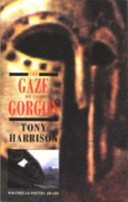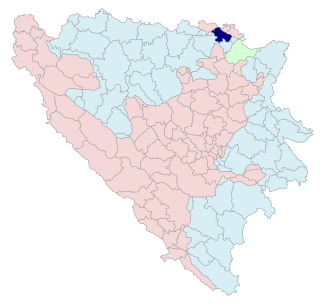Related Research Articles

Delphi, in legend previously called Pytho (Πυθώ), was an ancient sacred precinct and the seat of Pythia, the major oracle who was consulted about important decisions throughout the ancient classical world. The ancient Greeks considered the centre of the world to be in Delphi, marked by the stone monument known as the Omphalos of Delphi (navel).

Hercules is the Roman equivalent of the Greek divine hero Heracles, son of Jupiter and the mortal Alcmena. In classical mythology, Hercules is famous for his strength and for his numerous far-ranging adventures.

Heracles, born Alcaeus or Alcides, was a divine hero in Greek mythology, the son of Zeus and Alcmene, and the foster son of Amphitryon. He was a descendant and half-brother of Perseus. He was the greatest of the Greek heroes, the ancestor of royal clans who claimed to be Heracleidae (Ἡρακλεῖδαι), and a champion of the Olympian order against chthonic monsters. In Rome and the modern West, he is known as Hercules, with whom the later Roman emperors, in particular Commodus and Maximian, often identified themselves. Details of his cult were adapted to Rome as well.
In Greco-Roman mythology, Leuce, also spelled Leuke, was a nymph and a daughter of the Titan Oceanus.
Tony Harrison is an English poet, translator and playwright. He was born in Beeston, Leeds and he received his education in Classics from Leeds Grammar School and Leeds University. He is one of Britain's foremost verse writers and many of his works have been performed at the Royal National Theatre. He is noted for controversial works such as the poem "V", as well as his versions of dramatic works: from ancient Greek such as the tragedies Oresteia and Lysistrata, from French Molière's The Misanthrope, from Middle English The Mysteries. He is also noted for his outspoken views, particularly those on the Iraq War. In 2015, he was honoured with the David Cohen Prize in recognition for his body of work. In 2016, he was awarded the Premio Feronia in Rome.

An aulos or tibia (Latin) was a wind instrument in ancient Greece, often depicted in art and also attested by archaeology.

In Greek mythology, the Shirt of Nessus, Tunic of Nessus, Nessus-robe, or Nessus' shirt was the poisoned shirt (chiton) that killed Heracles. It was once a popular reference in literature. In folkloristics, it is considered an instance of the "poison dress" motif.

Senecan tragedy refers to a set of ten ancient Roman tragedies, eight of which were probably written by the Stoic philosopher and politician Lucius Annaeus Seneca.

Children of Heracles is an Athenian tragedy by Euripides that was first performed c. 430 BC. It follows the children of Heracles as they seek protection from Eurystheus. It is the first of two surviving tragedies by Euripides where the children of Heracles are suppliants.

The architectural form of theatre in Rome has been linked to later, more well-known examples from the 1st century BC to the 3rd Century AD. The theatre of ancient Rome referred to a period of time in which theatrical practice and performance took place in Rome. The tradition has been linked back even further to the 4th century BC, following the state’s transition from monarchy to republic. Theatre during this era is generally separated into genres of tragedy and comedy, which are represented by a particular style of architecture and stage play, and conveyed to an audience purely as a form of entertainment and control. When it came to the audience, Romans favored entertainment and performance over tragedy and drama, displaying a more modern form of theatre that is still used in contemporary times.
Peter Meineck is Professor of Classics in the Modern World at New York University. He is also the founder and humanities program director of Aquila Theatre and has held appointments at Princeton University and University of South Carolina.

Drama is the specific mode of fiction represented in performance: a play, opera, mime, ballet, etc., performed in a theatre, or on radio or television. Considered as a genre of poetry in general, the dramatic mode has been contrasted with the epic and the lyrical modes ever since Aristotle's Poetics —the earliest work of dramatic theory.

The Athenian Treasury at Delphi was constructed by the Athenians to house dedications and votive offerings made by their city and citizens to the sanctuary of Apollo. The entire treasury including its sculptural decoration is built of Parian marble. The date of construction is disputed, and scholarly opinions range from 510 to 480 BCE. It is located directly below the Temple of Apollo along the Sacred Way for all visitors to view the Athenian treasury on the way up to the sanctuary.
The Armenian Theater dates to before Roman times and is one of the oldest Eurasian theatrical traditions. Alongside Greek and Roman theatres, it stands as one of the world's most ancient theatres. The ancient and beloved form of theatrical art is lyrical (profound) drama, which exerted its influence on the folklore of the Near East, Balkan, and Apennine peoples. Within this cultural context, Armenian folk and mystical drama, characterized by its dance elements, also took shape. Although the ancient theatre system hasn't been preserved, it has left its linguistic marks.

Lekan Balogun is a Nigerian dramatist and theatre director. His plays include Moremi Ajaasoro, performed as the Western zone's entry for the Festival of Nigerian Plays ; Olofin Ajaye and The Mote in the Eye, NANTAP International Theatre Day, 2008 and 2009/20th Anniversary Play projects; The Rejected Stone, an African retelling of the popular fable Cinderella, Alaafin Kanran, Farewell and Dirty Circle for Royal Court Theatre, London, excerpt performed at the Sloane Square, Jerwood Theatre, London, in 2009 with sponsorship from the British Council, Nigeria & GENESIS Foundation, UK; The Ghost Catcher; Goodbye Yesterday; Our Tomorrow Today; Ijebu 1832; For Heroes and Scoundrels, among others. He wrote and directed a play about Zulu folklore (Izibongo) and history in 2008 with the title Shaka, the Zulu legend.

The Gaze of the Gorgon is a film-poem created in 1992 by English poet and playwright Tony Harrison which examines the politics of conflict in the 20th century using the Gorgon and her petrifying gaze as a metaphor for the actions of the elites during wars and other crises and the muted response and apathy these traumatic events generate among the masses seemingly petrified by modern Gorgons gazing at them from pediments constructed by the elites.

Prometheus is a 1998 film-poem created by English poet and playwright Tony Harrison, starring Walter Sparrow in the role of Prometheus. The film-poem examines the political and social issues connected to the fall of the working class in England, amidst the more general phenomenon of the collapse of socialism in Eastern Europe, using the myth of Prometheus as a metaphor for the struggles of the working class and the devastation brought on by political conflict and unfettered industrialisation. It was broadcast on Channel 4 and was also shown at the Locarno Film Festival. It was used by Harrison to highlight the plight of the workers both in Europe and in Britain. His film-poem begins at a post-industrialist wasteland in Yorkshire brought upon by the politics of confrontation between the miners and the government of Margaret Thatcher. It has been described as "the most important artistic reaction to the fall of the British working class" at the end of the twentieth century.
The Trackers of Oxyrhynchus is a 1990 play by English poet and playwright Tony Harrison. It is partially based on Ichneutae, a satyr play by the fifth-century BC Athenian dramatist Sophocles, which was found in fragments at the Egyptian city of Oxyrhynchus.

During the decline and dissolution of the Ottoman Empire, Muslim inhabitants living in territories previously under Ottoman control, often found themselves as a persecuted minority after borders were re-drawn. These populations were subject to genocide, expropriation, massacres, religious persecution, mass rape, and ethnic cleansing.

The Bosanski Šamac ethnic cleansing refers to war crimes, including murder, looting, ethnic cleansing and persecution committed against Bosniaks and Croats in the Bosanski Šamac area by the Yugoslav People's Army and Serb paramilitary units from 17 April until November 1992 during the Bosnian war. The area was later incorporated into the newly formed proto-state Republika Srpska.
References
- 1 2 Harrison, Tony (Spring 1996). "The Labourers of Herakles". Arion . 4 (1): 115–154. JSTOR 20163603.
- 1 2 Peter Holland (16 October 2003). Shakespeare Survey: Volume 56, Shakespeare and Comedy: An Annual Survey of Shakespeare Studies and Production. Cambridge University Press. p. 238. ISBN 978-0-521-82727-0 . Retrieved 30 May 2013.
- 1 2 3 Steve Padley (18 September 2008). ""Hijacking Culture": Tony Harrison and the Greeks". Cycnos. Cycnos | Volume 18 n°1 Le théâtre britannique au tournant du millénaire -. Le théâtre britannique au tournant du millénaire -.
- 1 2 3 4 5 Kathleen Riley (24 April 2008). The Reception and Performance of Euripides' Herakles : Reasoning Madness: Reasoning Madness. OUP Oxford. pp. 340–341. ISBN 978-0-19-156001-9 . Retrieved 31 May 2013.
- ↑ "The Hercules Project". Faculty of Arts University of Leeds.
- 1 2 Carol Chillington Rutter (1997). "Harrison, Herakles, and Wailing Women: 'Labourers' at Delphi". New Theatre Quarterly. Cambridge University Press. 13 (50): 133–143. doi:10.1017/S0266464X00008794. S2CID 193242643.
- 1 2 Sandie Byrne (29 May 1997). Tony Harrison : Loiner: Loiner. Clarendon Press. pp. 1–2. ISBN 978-0-19-158364-3 . Retrieved 30 May 2013.
- 1 2 3 4 Hallie Rebecca Marshall. "Banging the Lyre: The Classical Plays of Tony Harrison" (PDF). Faculty of Graduate Studies (Comparative Literature) UNIVERSITY OF BRITISH COLUMBIA (Vancouver). p. 151.
- ↑ D. F. W. van Lennep (1949). The Alkestis: With an Introduction, Metrical Synopsis and Commentary. E. J Brill. p. 129. Retrieved 2 June 2013.
- ↑ Kurt Heinemann (1913). Thanatos in Poesie und Kunst der Griechen. In Kommission bei A. Buchholtz. p. 21. Retrieved 2 June 2013.
- ↑ Ian C. Storey; Arlene Allan (15 April 2008). A Guide to Ancient Greek Drama. John Wiley & Sons. p. 92. ISBN 978-1-4051-3763-8 . Retrieved 3 June 2013.
- ↑ Robert Flaceliere (2008). A literary history of Greece. Aldine Transaction. pp. 139–. ISBN 978-1-4128-4505-2 . Retrieved 3 June 2013.
- ↑ Carol Dougherty (12 December 2005). Prometheus. Routledge. p. 129. ISBN 978-1-134-34752-0 . Retrieved 31 May 2013.
- ↑ Lorna Hardwick. "Open Colloquium 1999 TONY HARRISON'S POETRY, DRAMA AND FILM : THE CLASSICAL DIMENSION". The Open University, UK.